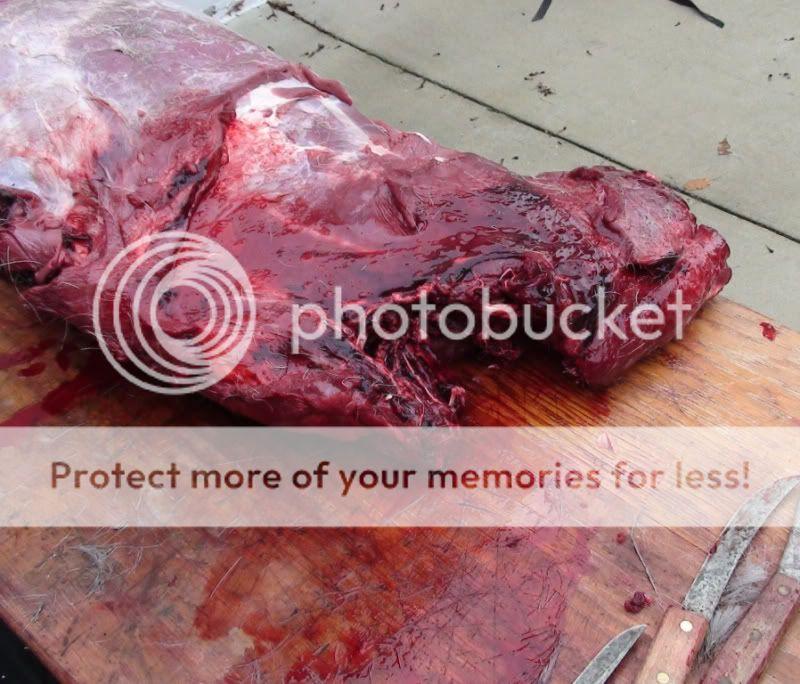Buffalobob
Well-Known Member
PART ONE
Berger has designed and tested a new 308 bullet that they claim will pass through the transonic zone without being upset. It is shown on their website under "tactical bullets" as a 175 grain match OTM tactical.. Bryan Litz, the ballistician for Berger has loaded ammo listed for sale on his website. The bullet may have some interesting applications for the military in terms of extending the range of the 308 sniper rifles and was tested by the Special Forces but not adopted. For the hunter or recreational shooter it extends the range of the 30 caliber cartridges beyond transonic distances.
Many manufacturers have made claims about their products and claimed to have tested them, but as many of us have found, not all claims turn out to be true. So, I ordered a box of the bullets for my 308. Here are a couple of pictures of the box and then there is a picture of two Sierra 175 MK on the left and two Berger 175OTMs on the right. It was misting rain at the time of the picture.
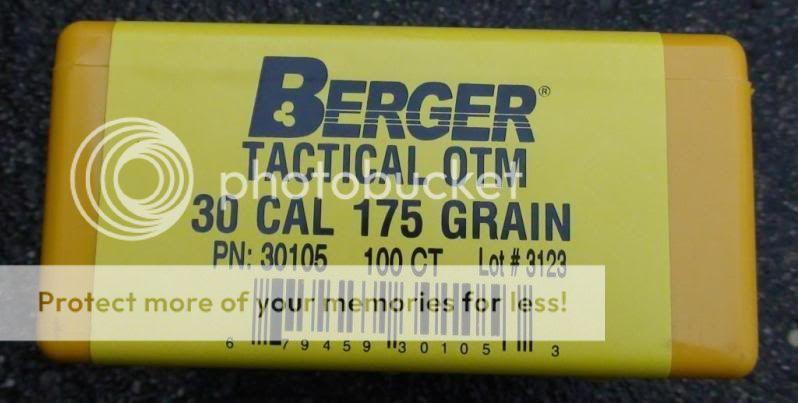
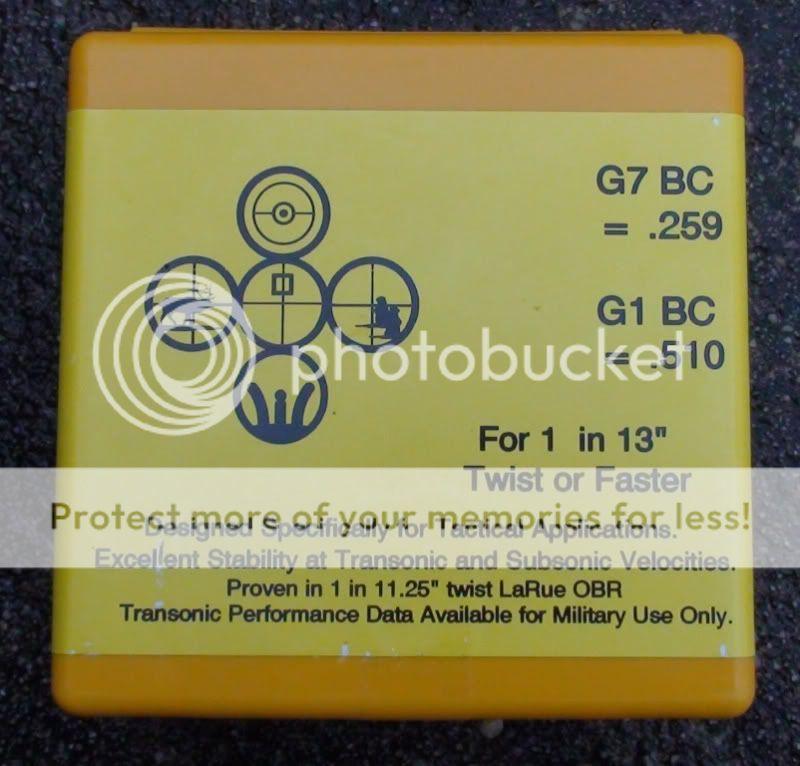
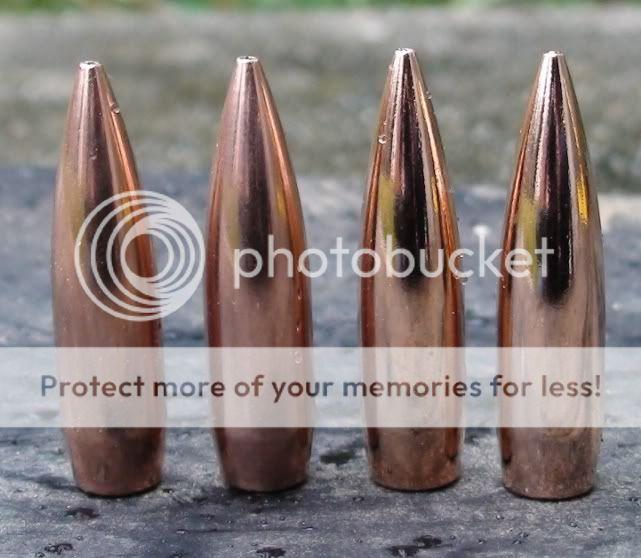
Deer season started Saturday after Thanksgiving so I needed to go to the rifle range to check some zeros and took along some loads for the OTMs to test for accuracy. I sometimes shoot 43.4 grains of Varget in RWS cases for competition with the Sierra 175 MK and on calm days that will group about 0.3-0.4 for three shots. (I more often shoot the Berger 155,5 Fullbore bullets for competition.) For this test I used Winchester cases that have about 1 grain more volume than RWS but are less consistent in quality. It was gusting wind up to 5mph so groups were a little more open.
First picture is of the standard 175MK loads where I am adjusting the zero between the top 3 shot group and the bottom 3 shot group. Aim point is the upper right corner of the small squares of tape.
Second picture is the Berger 175 OTMs with three different charges of Varget and 5 shot groups instead of 3 shot groups. All three groups go just under 0.5 for five shots. This is acceptable accuracy for me and this particular rifle.
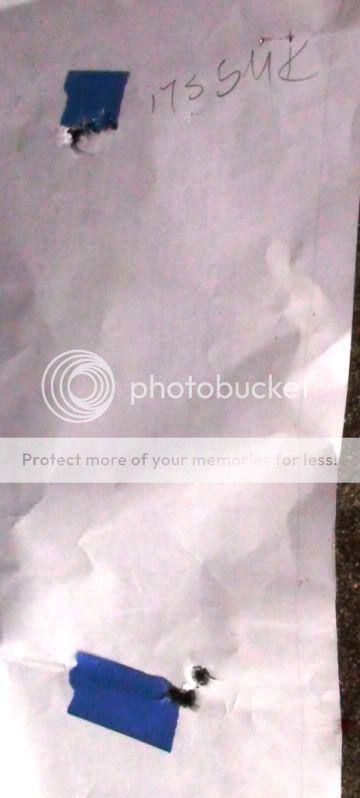
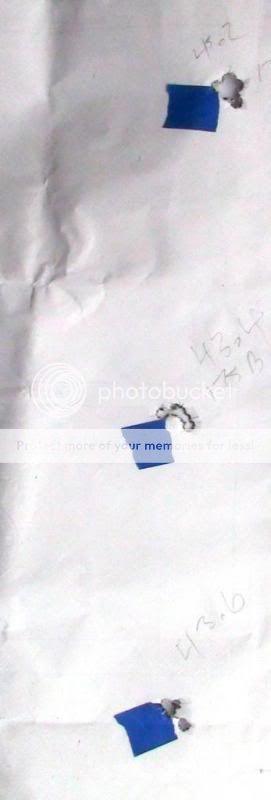
Berger has designed and tested a new 308 bullet that they claim will pass through the transonic zone without being upset. It is shown on their website under "tactical bullets" as a 175 grain match OTM tactical.. Bryan Litz, the ballistician for Berger has loaded ammo listed for sale on his website. The bullet may have some interesting applications for the military in terms of extending the range of the 308 sniper rifles and was tested by the Special Forces but not adopted. For the hunter or recreational shooter it extends the range of the 30 caliber cartridges beyond transonic distances.
Many manufacturers have made claims about their products and claimed to have tested them, but as many of us have found, not all claims turn out to be true. So, I ordered a box of the bullets for my 308. Here are a couple of pictures of the box and then there is a picture of two Sierra 175 MK on the left and two Berger 175OTMs on the right. It was misting rain at the time of the picture.



Deer season started Saturday after Thanksgiving so I needed to go to the rifle range to check some zeros and took along some loads for the OTMs to test for accuracy. I sometimes shoot 43.4 grains of Varget in RWS cases for competition with the Sierra 175 MK and on calm days that will group about 0.3-0.4 for three shots. (I more often shoot the Berger 155,5 Fullbore bullets for competition.) For this test I used Winchester cases that have about 1 grain more volume than RWS but are less consistent in quality. It was gusting wind up to 5mph so groups were a little more open.
First picture is of the standard 175MK loads where I am adjusting the zero between the top 3 shot group and the bottom 3 shot group. Aim point is the upper right corner of the small squares of tape.
Second picture is the Berger 175 OTMs with three different charges of Varget and 5 shot groups instead of 3 shot groups. All three groups go just under 0.5 for five shots. This is acceptable accuracy for me and this particular rifle.





